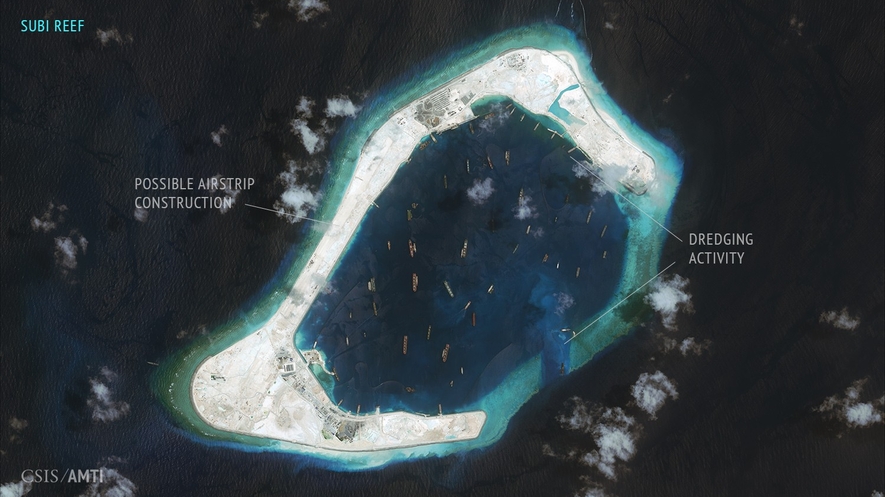News that China has completed a runway on a newly constructed artificial island in the South China Sea serves as proof that the nation intends to enforce its territorial claims. However, there’s another side to this story: The impact all this construction has on a delicate, invaluable ecosystem.
China controls several reefs and emerging features scattered throughout the South China Sea. These include the Spratly Island chain, an area so diverse it's been proposed as an international marine park.
Unfortunately, instead of protecting these areas, China is building massive manmade structures on these partially submerged landforms, many of which include biologically sensitive reefs. Primarily, they dump sand onto reefs and shoals, then add extensive military facilities on top.
Recent satellite images show devastating destruction. Both the US and Japan have entered into dialogue with China to try slowing the military build up and yet, China continues to build manmade islands on top of coral reefs. Scientists say that construction in these topical reefs could threaten world fish stocks and impact biodiversity in Mischief Reef, Subi Reef, and other formerly pristine locations.
According to professor John McManus, an expert in marine biology and fisheries at the University of Miami, who analyzed satellite images provided by the Asia Maritime Transparency Initiative, a recent photo of construction of what looks like an airstrip on Mischief Reef is particularly disturbing.
“The sand and silt stirred up by the dredgers covers most of the lagoon and is settling out on most of the remaining reef. The sand will kill nearly any bottom-dwelling organisms on which it settles in large quantities, and clog the gills of most fish. I don’t expect to find any fish surviving within that lagoon except in the very southern areas,” McManus told The Guardian (UK).
How important is this area? Speaking to ECO Magazine, McManus said it is home to considerable ecological and biodiversity value, which supports the surrounding ecosystems. In fact, he says, if not for larvae produced in the now-threatened coral, some fish species in nearby areas would probably go extinct.
McManus also notes that the area is already under considerable duress, stating that “along the coasts of the South China Sea, many of the coral reef fisheries are heavily overfished,” and that further duress could impact the world’s food supply because the South China Sea currently ranks among the world’s most productive fishing zones.
Along with Kwang-Tsaou Shao and Szu-Yin Lin of the Biodiversity Research Center, (Academia Sinica, Taiwan), McManus co-authored a 2010 paper advocating the establishment of an International Marine Peace Park in the South China Sea, which would “manage the area’s natural resources and alleviate regional tensions via a freeze on claims and claim supportive actions.”
Back in 2010, the three authors hoped for something along the lines of a Large Marine Ecosystem (LME) study, which could go a long way toward building consensus for protecting these sensitive ecosystems. They recommended creating a taxonomy and compilation of fauna and flora of the South China Sea and establishing a long-term ecological research and monitoring program, including a robust information sharing aspect. While he still would like to see the area protected, McManus told ECO Magazine that “the worst thing anyone can do to a coral reef is to bury it under tons of gravel and sand.”
While reliable surveys have been scarce, two decades ago, a group led by Taiwan’s National Museum of Marine Biology and Aquarium conducted a survey near Taiping Island in the South China Sea and recorded 399 reef fish species, 190 coral species, 99 mollusk species, 91 invertebrate species, 27 crustacean species, 14 polychaete species, 4 echinoderm species, and 109 terrestrial vascular plant species. There were also 59 bird species observed, which indicates the area is a major stop for migratory birds in East Asia.
US President Barack Obama urged China to slow development in the Spratly Islands during the visit of Chinese President Xi Jinping to the White House on 24 September 2015, but the visit is expected to have no impact on the nation’s continued build up in the area. Previously, the administration blocked the US Navy from sailing near the disputed islands.
An update on this story will appear in ECO Magazine’s November edition. See more images of the China island buildup here.
Also highly recommended, see a special issue of the Journal of International Wildlife Law & Policy targeting this subject here.





